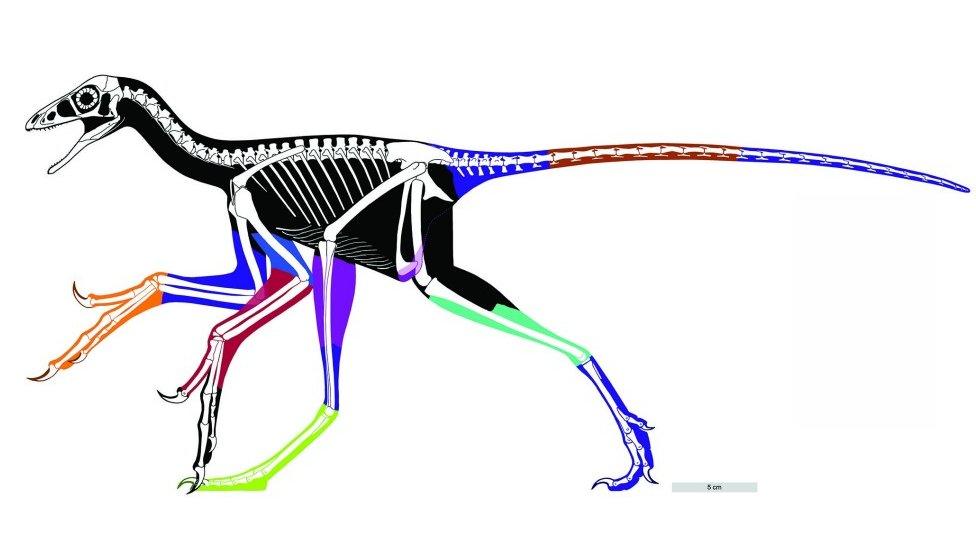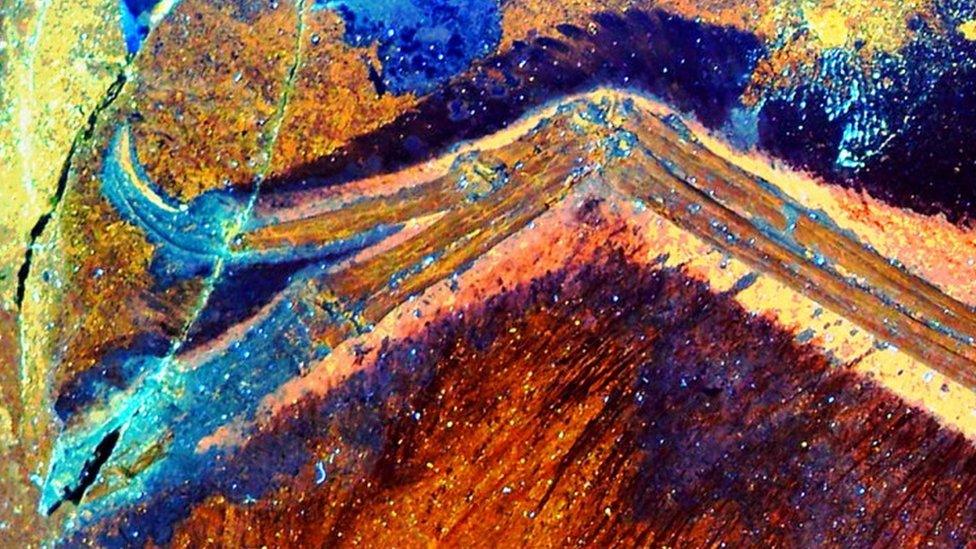'Best ever' view of what a dinosaur really looked like
- Published

Anchiornis: A feathered dinosaur from China
A dinosaur that lived 160 million years ago had drumstick-shaped legs much like living birds, according to palaeontologists.
The feathered dinosaur also had bird-like arms similar to wings.
Scientists used high-powered lasers to reveal invisible details of what the creature looked like.
The research could give insights into the origins of flight, which is thought to have evolved more than 150 million years ago.
Michael Pittman of the University of Hong Kong said the study was a landmark in our understanding of the origins of birds.
"In this study, what we've done is we've used high-powered lasers to reveal unseen soft tissues preserved alongside the bones of a feathered dinosaur called Anchiornis," he said.

Studies of nine Anchiornis specimens reveal the accurate body outline of the bird-like dinosaur
The research team used laser-stimulated fluorescence imaging, a technique that reveals soft tissue details that are unseen under visible light.
The method involves sweeping laser light across a specimen while taking long-exposure photos with a camera.

The wing of the dinosaur
Dr Stephen Brusatte of the University of Edinburgh, who was not connected with the research, said the study produced striking evidence of just how bird-like these dinosaurs were.
"This study uses high-powered lasers to generate the single best look at the wings and body outline of a dinosaur ever," he told the BBC News website.
"The laser images show that this non-bird dinosaur had wings that were remarkably similar to those of living birds, down to the soft tissues."
Anchiornis is Greek for "almost bird".
The dinosaur lived in China during the late Jurassic Period, around the time when the first true birds are thought to have appeared.
The creature had feathers and seems to have been black with white stripes and displayed a distinctive orange feather crest on the crown of its head.
It is not clear whether Anchiornis could fly or glide.
The research is published in the journal Nature Communications, external.
Follow Helen on Twitter, external.